The Glamour of Art Deco Interior Design
Learn how to add Art Deco touches to any room, whether you want a full makeover or just a few glamorous accents.
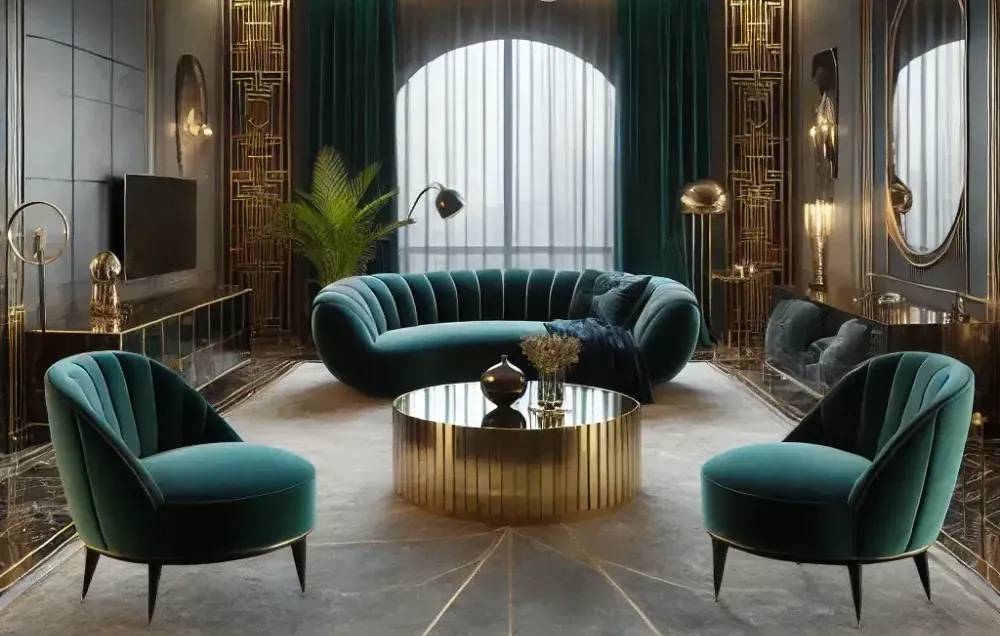
A symbol of elegance and refinement, Art Deco continues to span the decades without losing any of its lustre. Born of the effervescence of the Roaring Twenties, this style embodies the luxury, controlled geometry and noble materials that still mark the world of design today.
Integrating Art Deco into a contemporary interior means playing with the codes of this emblematic movement while adapting them to current trends. Geometric patterns, opulent textures and metallic touches can coexist harmoniously with sleeker elements to create a decor that's both chic and timeless. Discover how to modernize Art Deco for an elegant, contemporary interior.
TL;DR
Art Deco style brings bold geometric shapes, clean lines, and rich colors to your home. Use fancy materials like chrome, glass, and velvet for a luxury feel. Mix black and white with jewel tones and add mirrors for shine. Keep furniture sleek and add small touches like sunburst mirrors and frosted glass lamps. Modern Art Deco interior is less bold, with a few key pieces mixed with your current style.
What is Art Deco interior design?
The Art Deco movement started in France after World War I. It peaked in the 1920s and 1930s, influencing design, fashion, and architecture. The style combined modern materials with craftsmanship, creating a sophisticated, futuristic look.
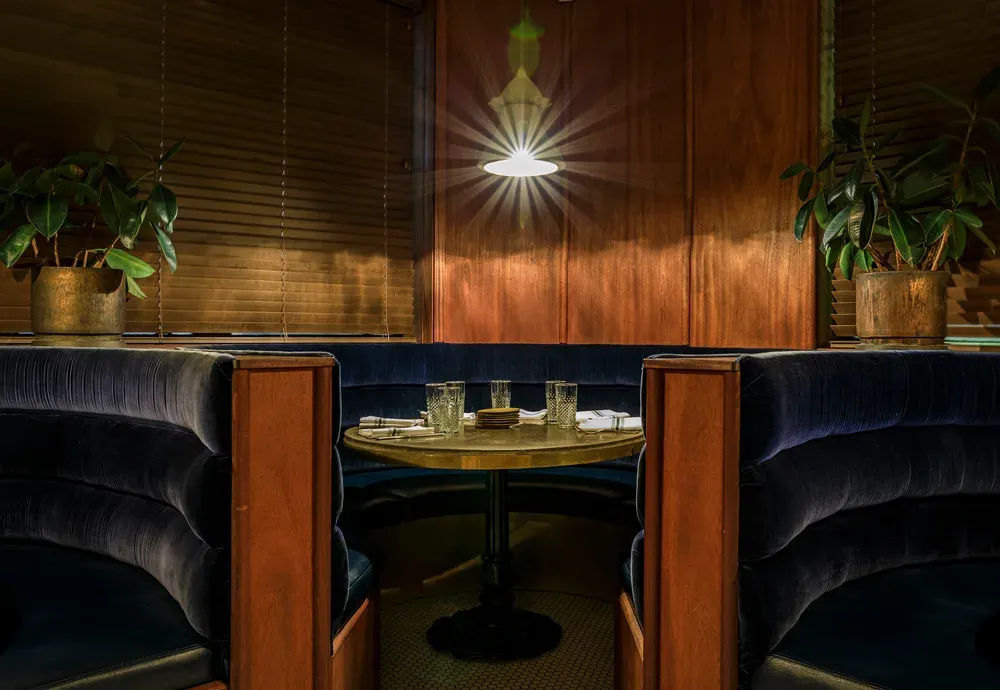
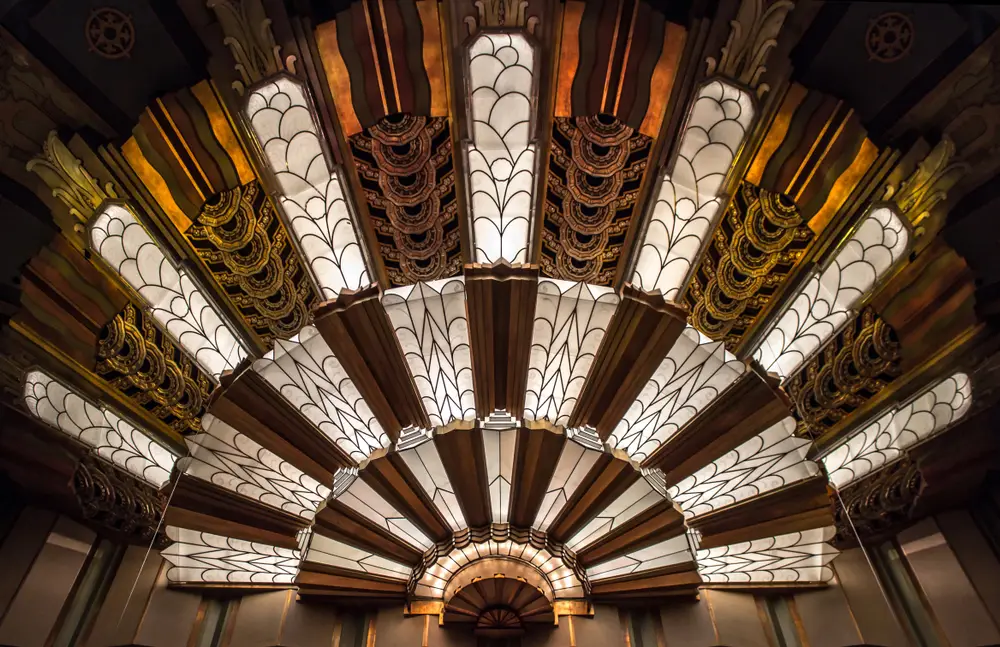
Art Deco takes its name from the 1925 Exposition Internationale des Arts Décoratifs et Industriels Modernes in Paris, an event that crystallized the aesthetic aspirations of its time. It resulted from a bold fusion of different influences, including Art Nouveau, Cubism, Futurism and even exotic inspirations from Egypt, Africa and Central America.
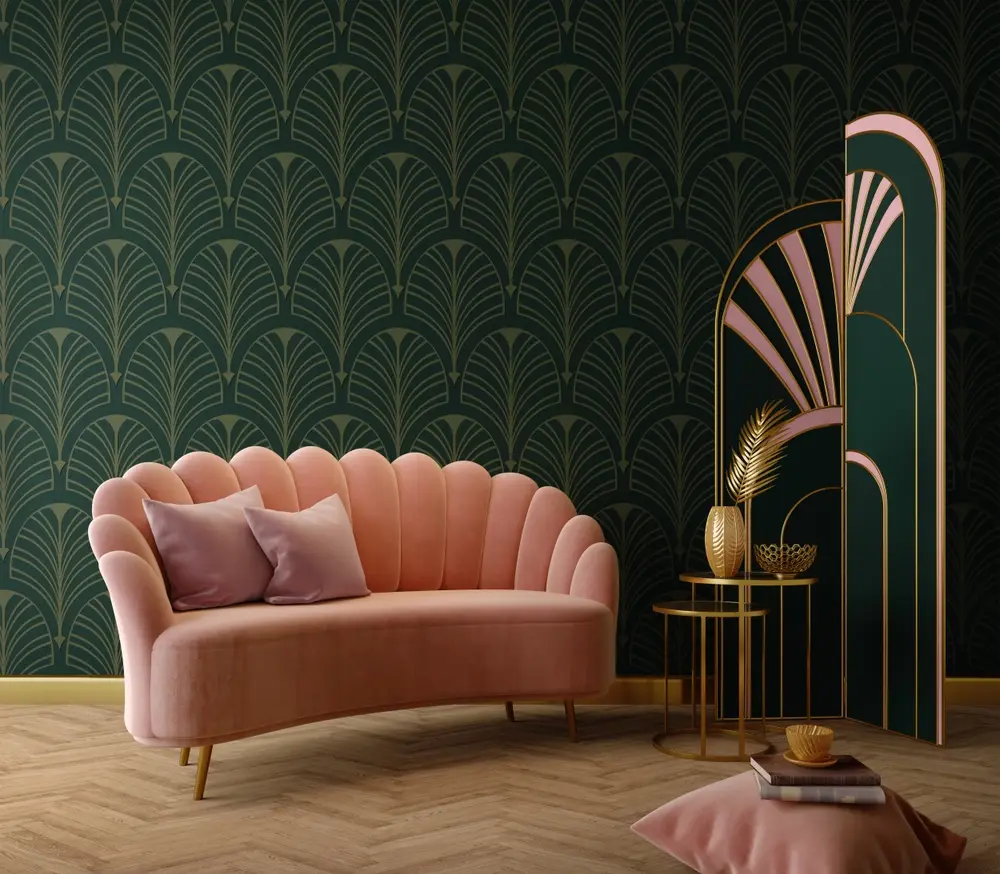
Art Deco design has geometric shapes, sharp lines, and rich colors. It uses fancy materials and eye-catching patterns for a luxury feel. This bold style makes spaces feel both modern and timeless. It blends luxury, drama, and order through bold shapes and rich colors.
Influence of Art Deco on architecture and interior design
Art Deco revolutionized interior design, creating luxurious, sophisticated spaces where harmony between comfort and aesthetics is paramount.
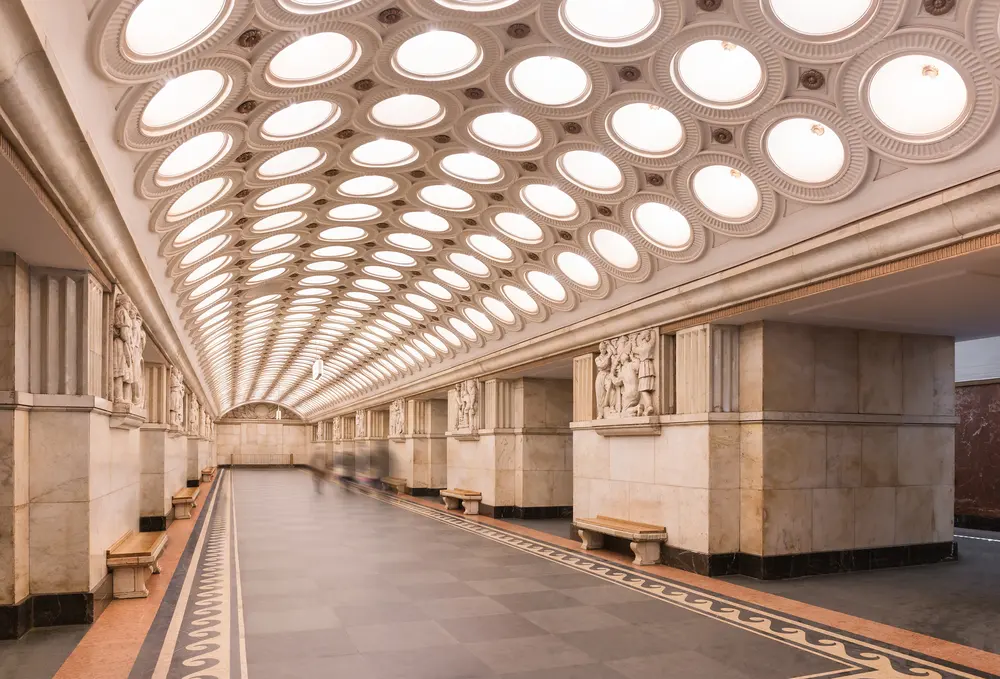
Art Deco interiors are characterized by symmetry, using luxurious materials and clean-lined furniture enhanced by careful lighting and stylized geometric motifs. This style created elegant, functional living spaces, symbols of the opulence and modernity of its time.
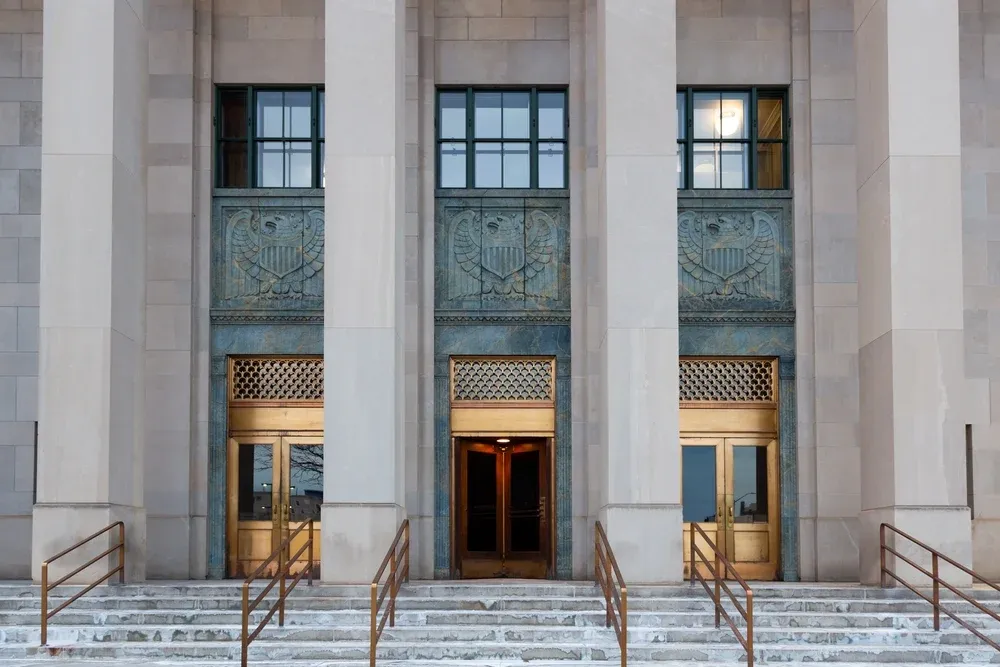
In architecture, Art Deco gave rise to iconic buildings that symbolize the optimism and modernity of the 1920s and 1930s. The Chrysler Building in New York, with its stainless steel spire and geometric motifs, is a masterful example of this aesthetic.
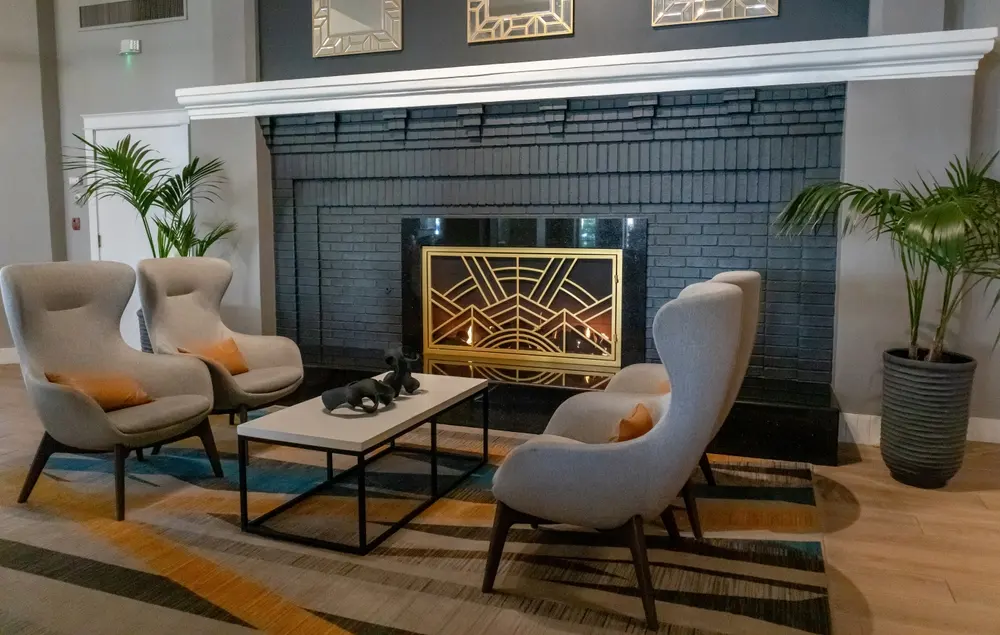
Apartment buildings, cinemas, hotels and department stores also adopted the codes of Art Deco, adorning their facades with bas-reliefs, mosaics and stained-glass windows with stylized motifs.
Key characteristics of Art Deco
This style emerged as a reaction to the classicism and excessive ornamentation of earlier periods, seeking to embody the spirit of modernity, progress and luxury. Art Deco is characterized by:
- Bold geometric shapes: Symmetry and sharp lines define the style.
- Luxurious materials: Glossy wood, metals, and marble are key elements.
- Rich colors: Deep blues, emerald greens, and gold dominate the palette.
- Statement lighting: Chandeliers, frosted glass, and sleek sconces add elegance.
- Stylized motifs: Chevron, sunburst, and fan patterns are common.
Colors and materials in Art Deco interiors
Art Deco is known for its rich colors and fancy materials that create a bold look. These elements work together to make spaces feel grand and memorable. The mix of colors and materials is key to getting the Art Deco look right.
Signature color palette
Art Deco uses bold, rich colors that make a strong statement in any room. Black and white create drama, while gold and silver add shine and deep green, blue, and red bring richness. Cream and beige offer balance and let the bolder colors stand out.
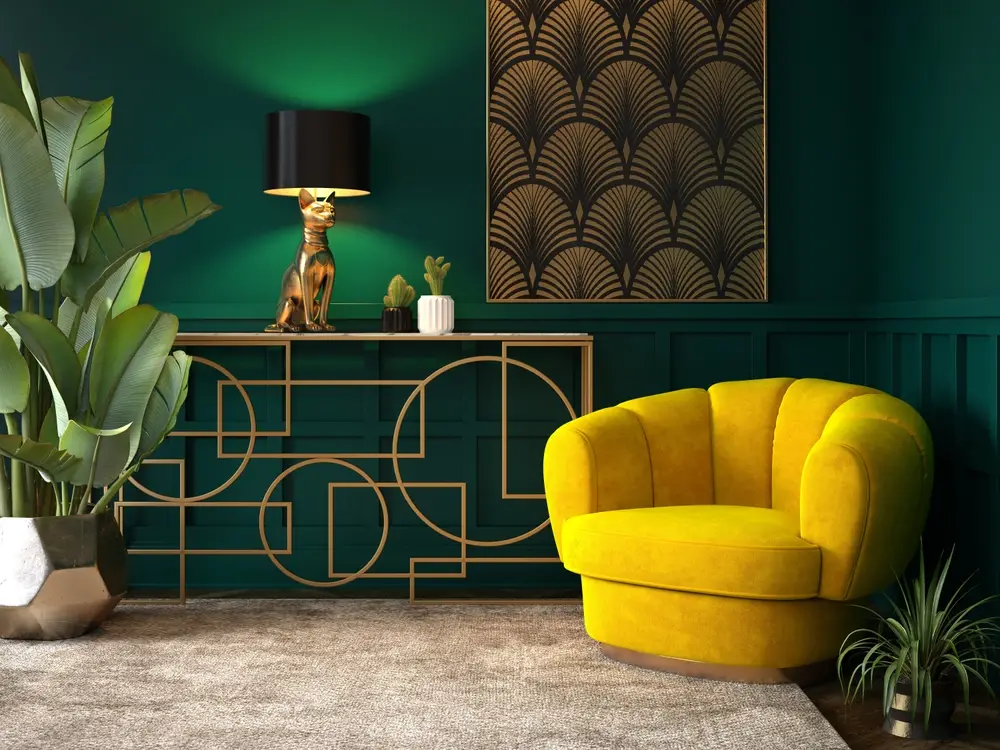
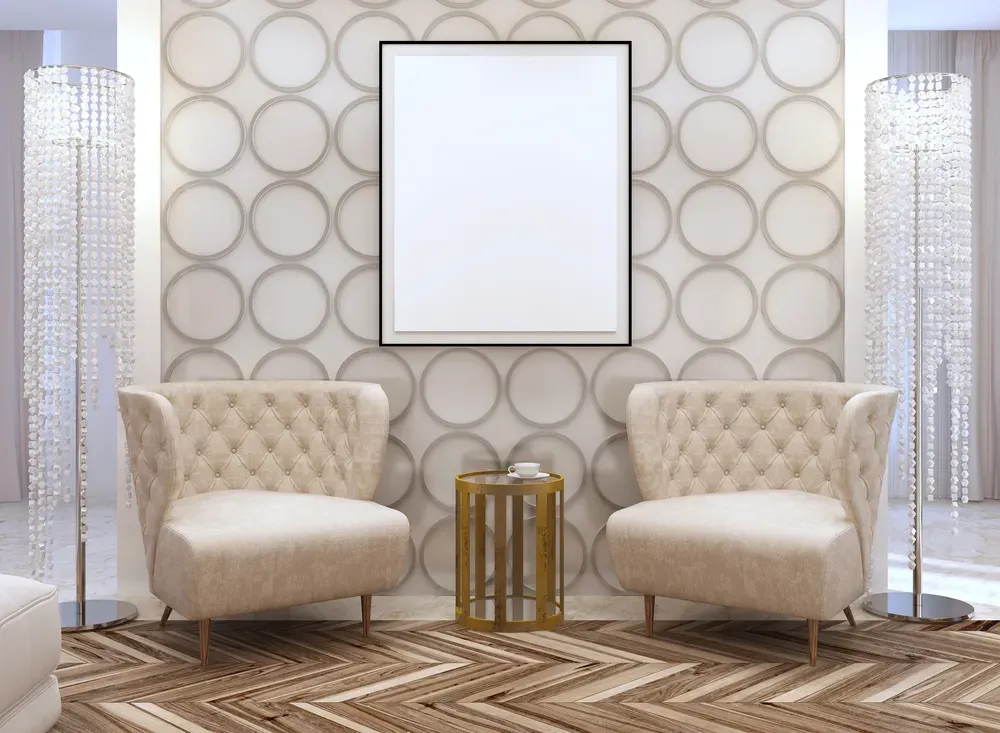
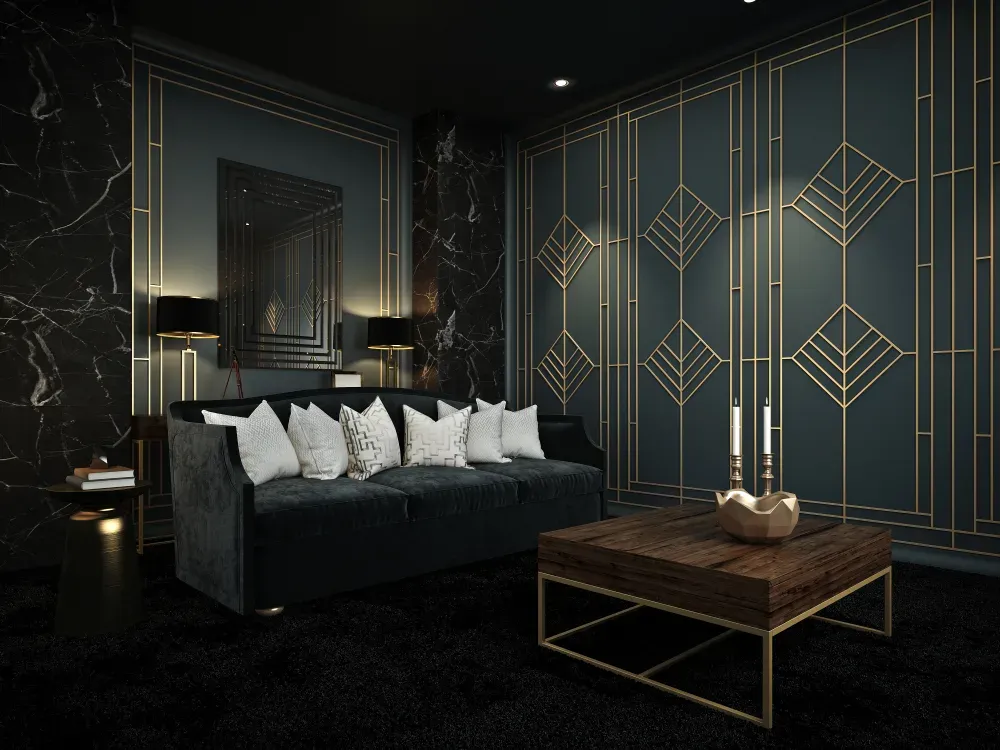
These colors often appear in blocks or as part of geometric patterns throughout the space. They work together to create a bold yet classy look that feels both fancy and welcoming. The contrast between dark and light adds depth to rooms.
Iconic materials
Art Deco spaces use high-end materials like brass, chrome, and steel for shine and impact. Dark, glossy woods often feature inlaid designs, while glass and mirrors add light and make spaces feel larger. Marble floors and counters bring natural patterns, and velvet and silk fabrics add softness.
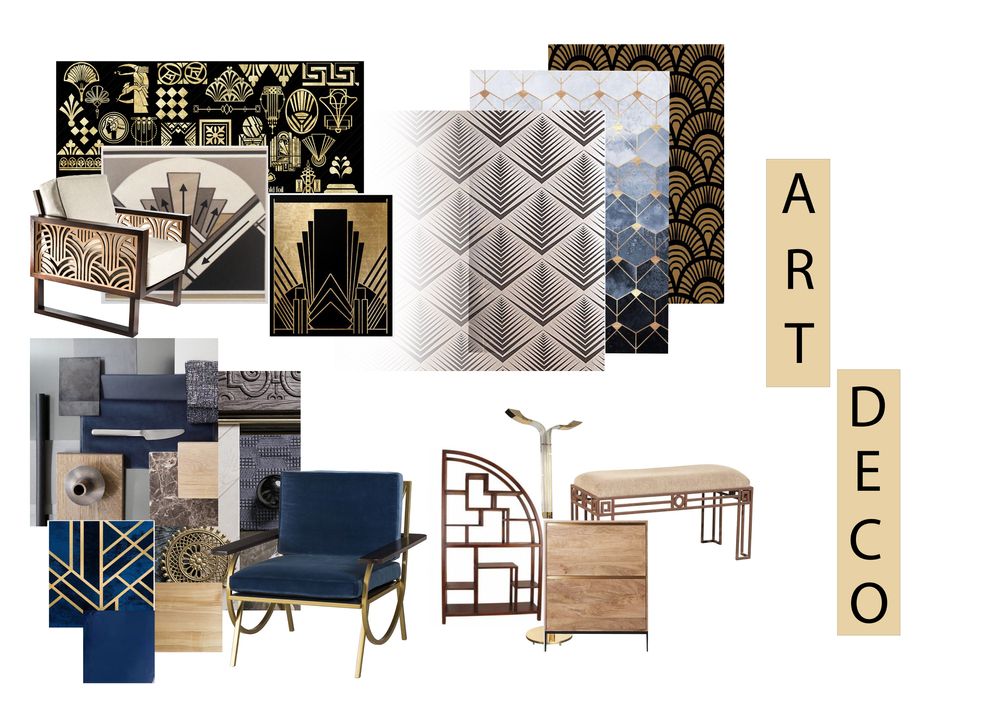
These materials work together to add texture and depth to Art Deco rooms. They show the style's focus on fine craftsmanship and luxury in every detail. Each material brings its own quality while fitting into the overall bold, geometric theme.
Furniture and accessories for a home in Art Deco style
The right furniture and small touches can bring Art Deco style into any home. These items share traits like clean lines, bold shapes, and rich finishes. Art Deco pieces stand out while working together to create a complete look.
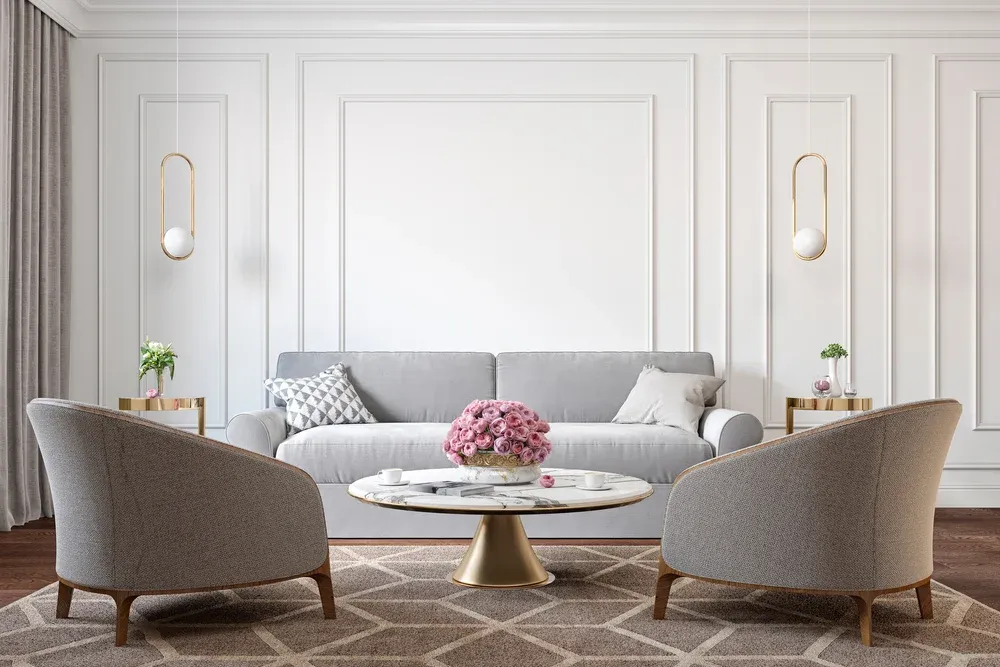
Art Deco furniture styles
Art Deco furniture has a strong, clean look with curved fronts but straight backs and few frills. Pieces often have glossy finishes and metal trim and come in bold fabric choices like velvet in deep colors. Built-in furniture that fits the room's shape was common in true Art Deco spaces.
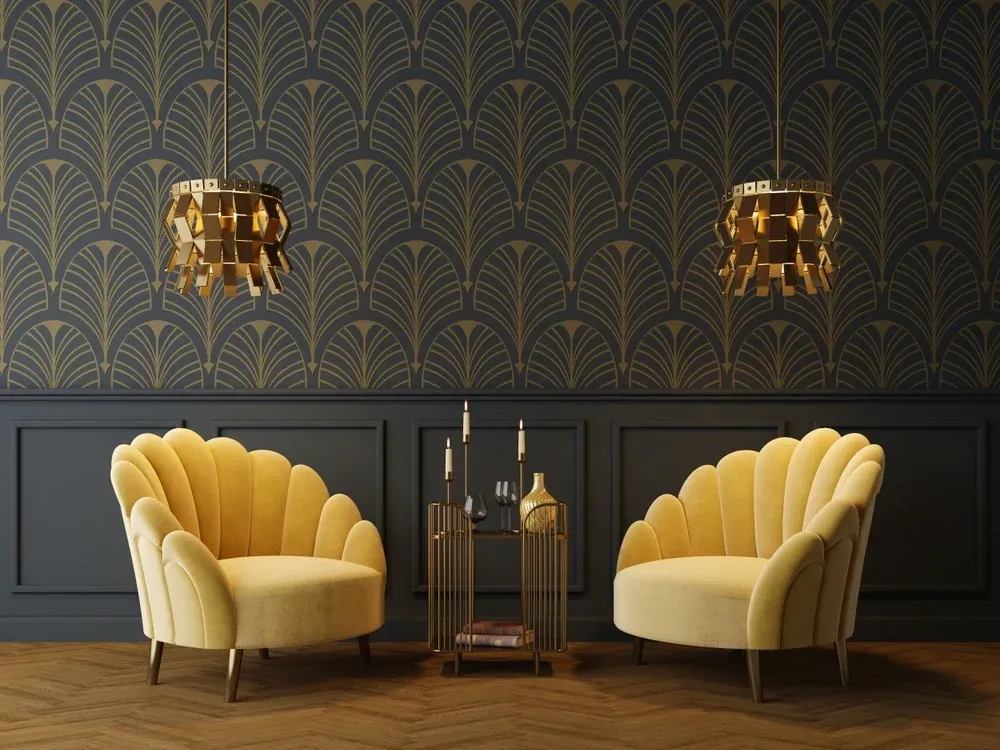
Famous Art Deco pieces include low, wide chairs and streamlined cabinets with simple shapes. These pieces mix comfort with style and often become focal points in a room. The best Art Deco furniture feels both fancy and comfortable.
Decorative accessories and finishing touches
The decor items can bring Art Deco style to life in any space. Lamps with frosted glass and metal bases cast warm light, while sunburst and fan-shaped mirrors reflect it around the room. Rugs with bold geometric patterns tie spaces together and add color from the ground up.
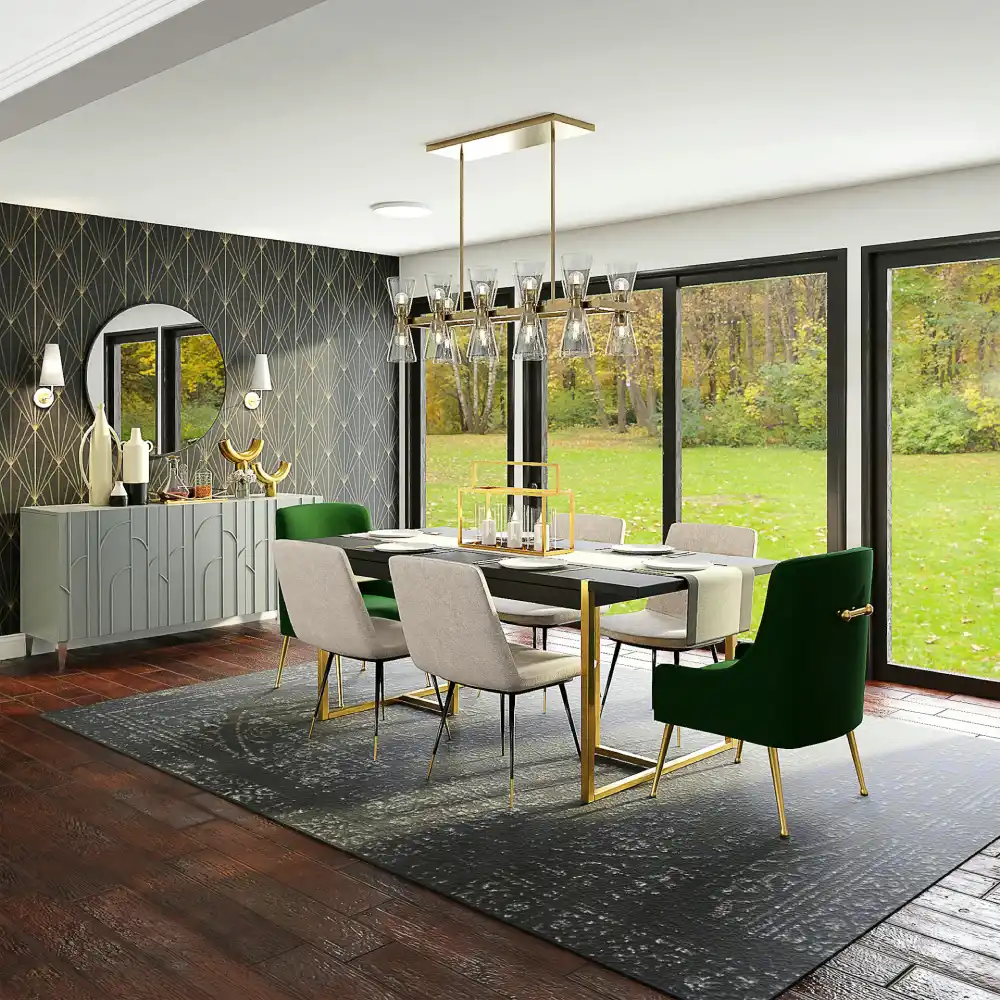
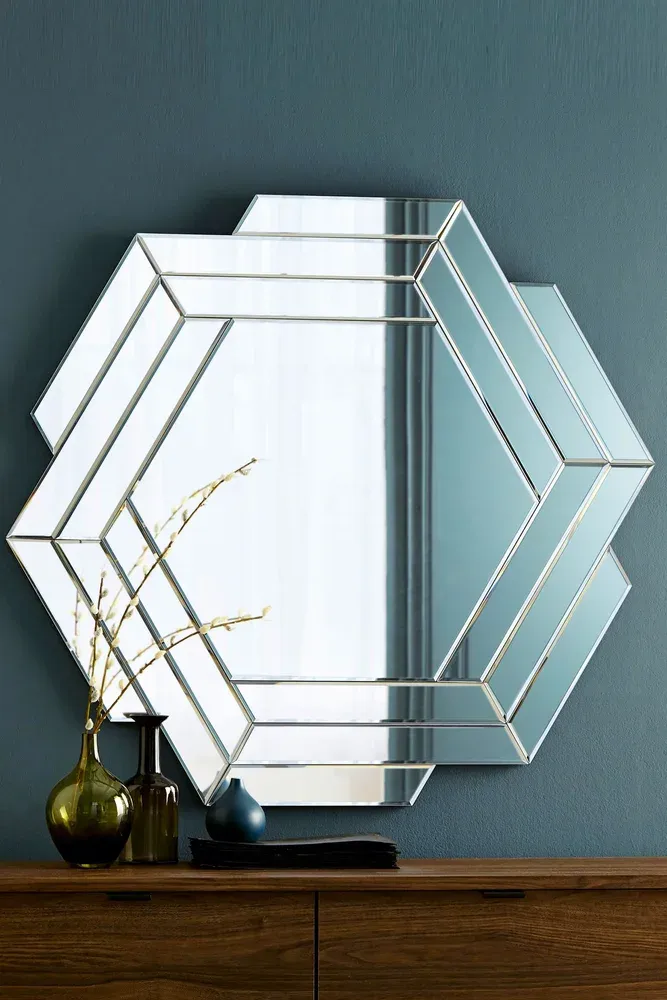
Art with clean lines and bold colors adds visual interest to walls. Vases and bowls in chrome or glass make perfect table accents that catch the eye. These touches add the glamour that makes Art Deco stand out from other design styles.
How to incorporate Art Deco into different rooms
Art Deco works well in any room of your home with some smart choices. Each space can show off the style in ways that match how you use the room. The key is picking the right Art Deco elements for each space.
Living room
The living room is perfect for Art Deco drama, starting with a bold velvet sofa as your main piece. Metal-framed chairs with clean lines and a low, wide coffee table add to the look. A sunburst mirror makes a great focal point, while table lamps with glass shades provide warm lighting.
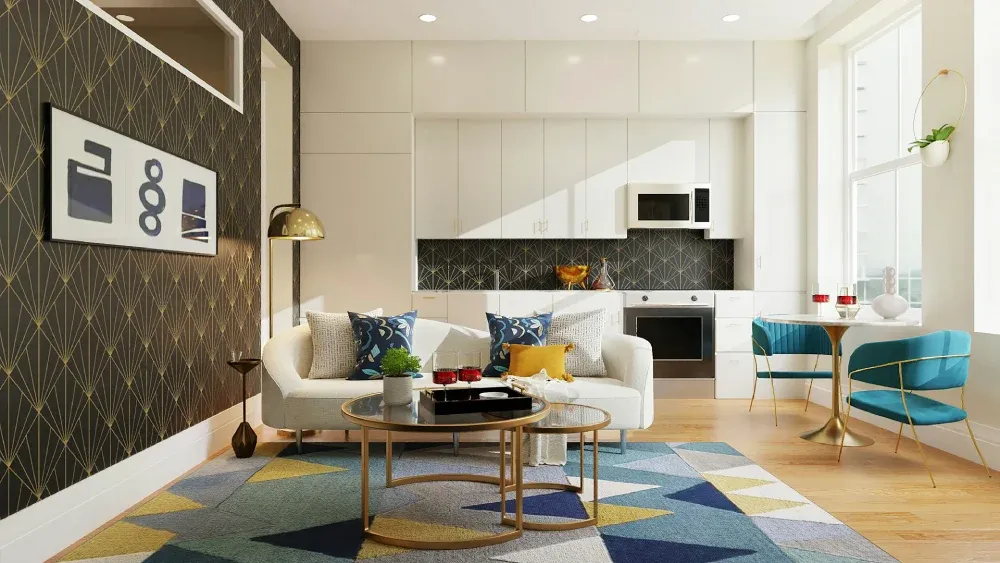
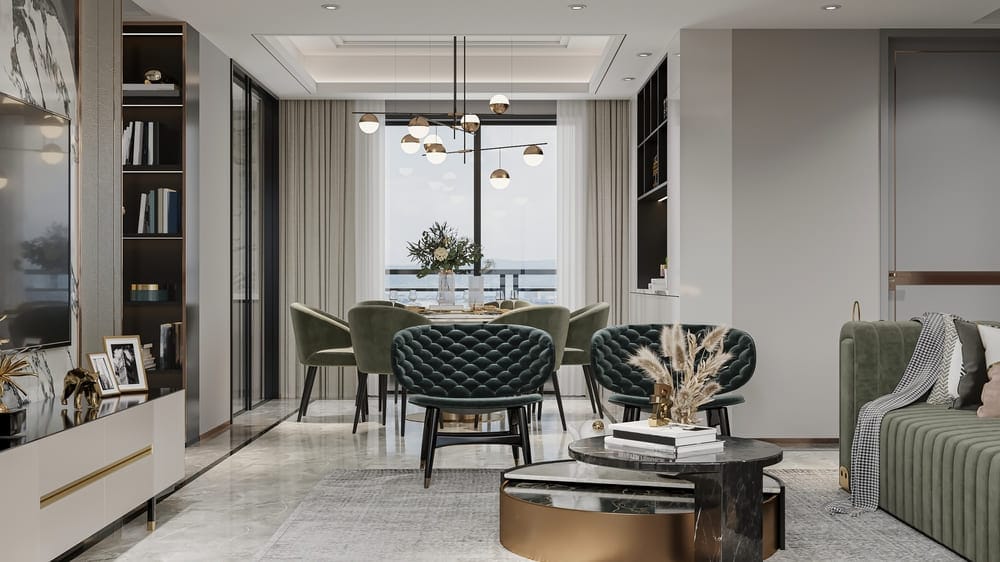
Balance glossy and matte finishes for a rich, layered look that isn't too shiny. Keep some space open to let the bold pieces breathe and stand out. This balance creates a room that feels both fancy and comfortable.
Bedroom
Create a fancy but calm Art Deco bedroom with a bed with a tall, padded headboard in velvet or silk. Add matching side tables with metal details and a bench at the foot of the bed for both style and function. Wall sconces provide soft light that's perfect for a bedroom setting.
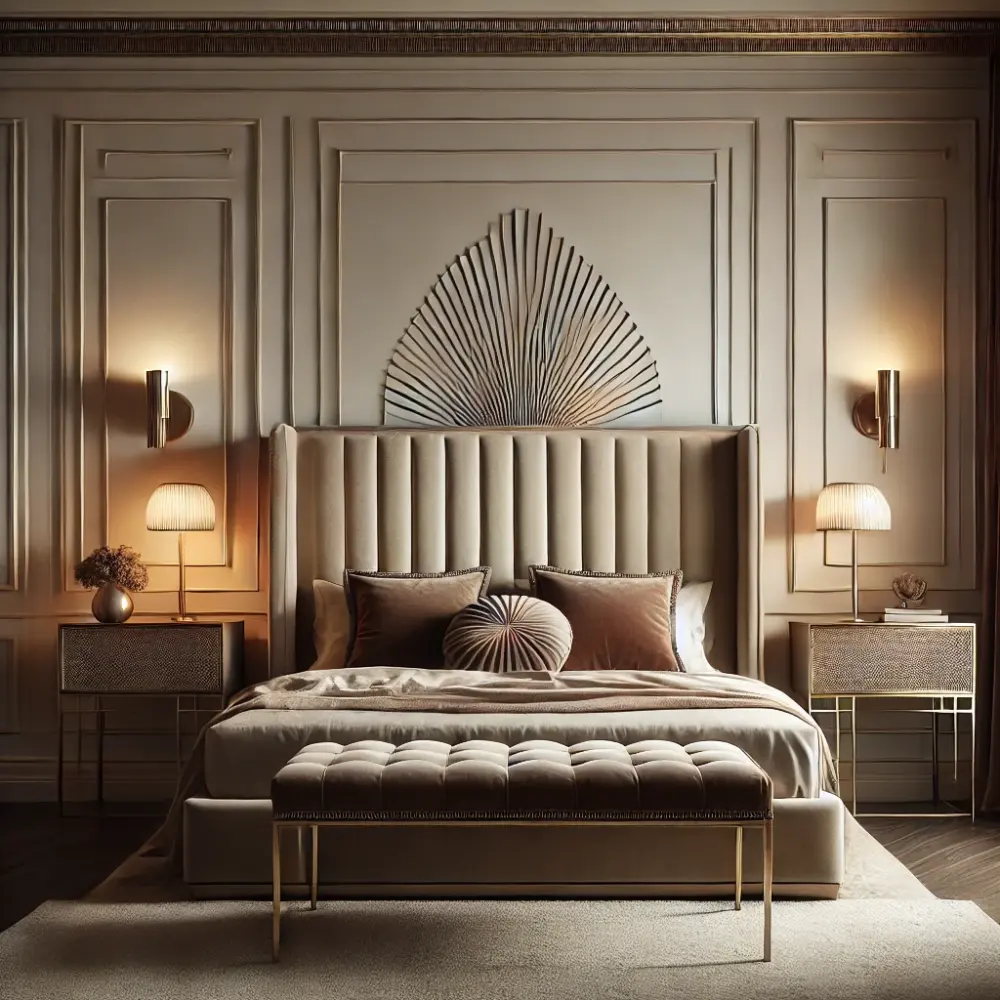
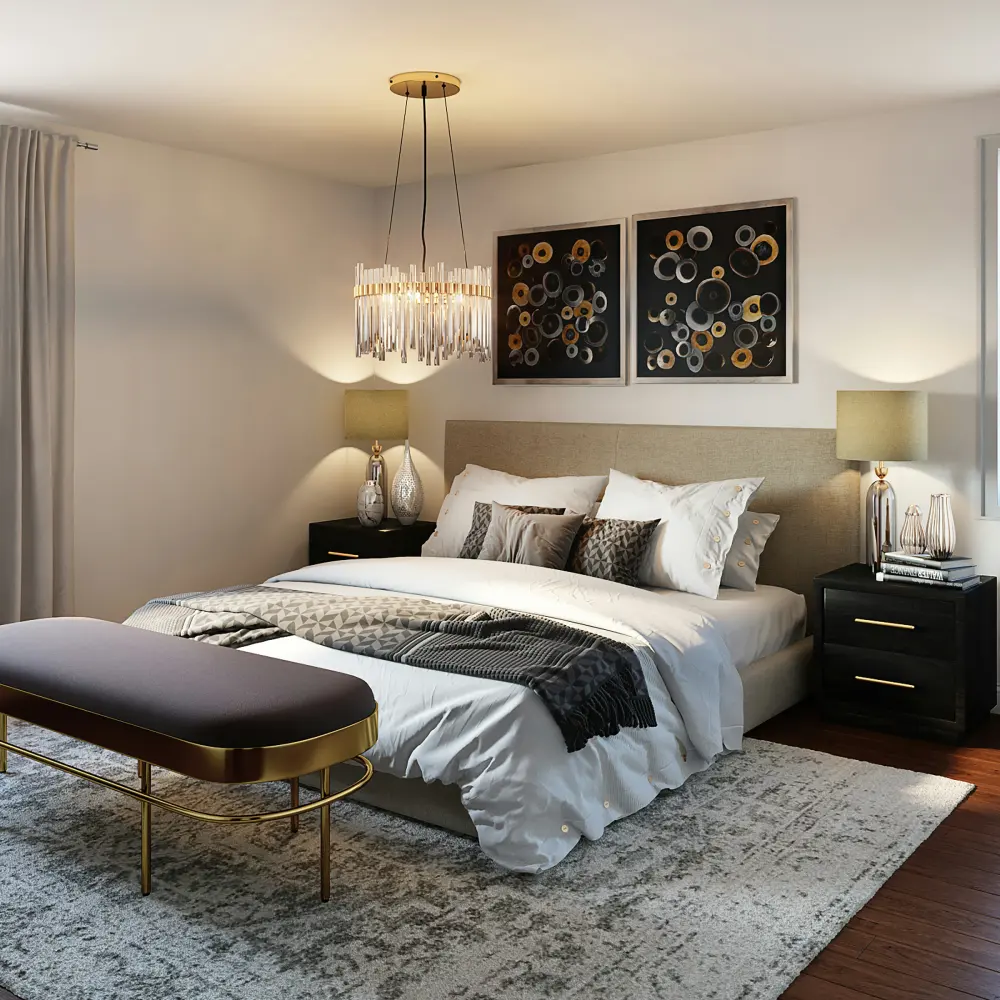
Keep the color scheme simple but rich, with no more than three main colors for a restful feel. Plush rugs add comfort underfoot and help with sound control. The bedroom should feel like a luxury hotel suite—fancy but still made for rest.
Kitchen and bathroom
These rooms can shine with Art Deco touches like black and white floor tiles in a checkerboard pattern. Brass or chrome fixtures add shine, while marble counters bring natural pattern and luxury. Glass cabinet doors with metal frames display dishes while adding style.
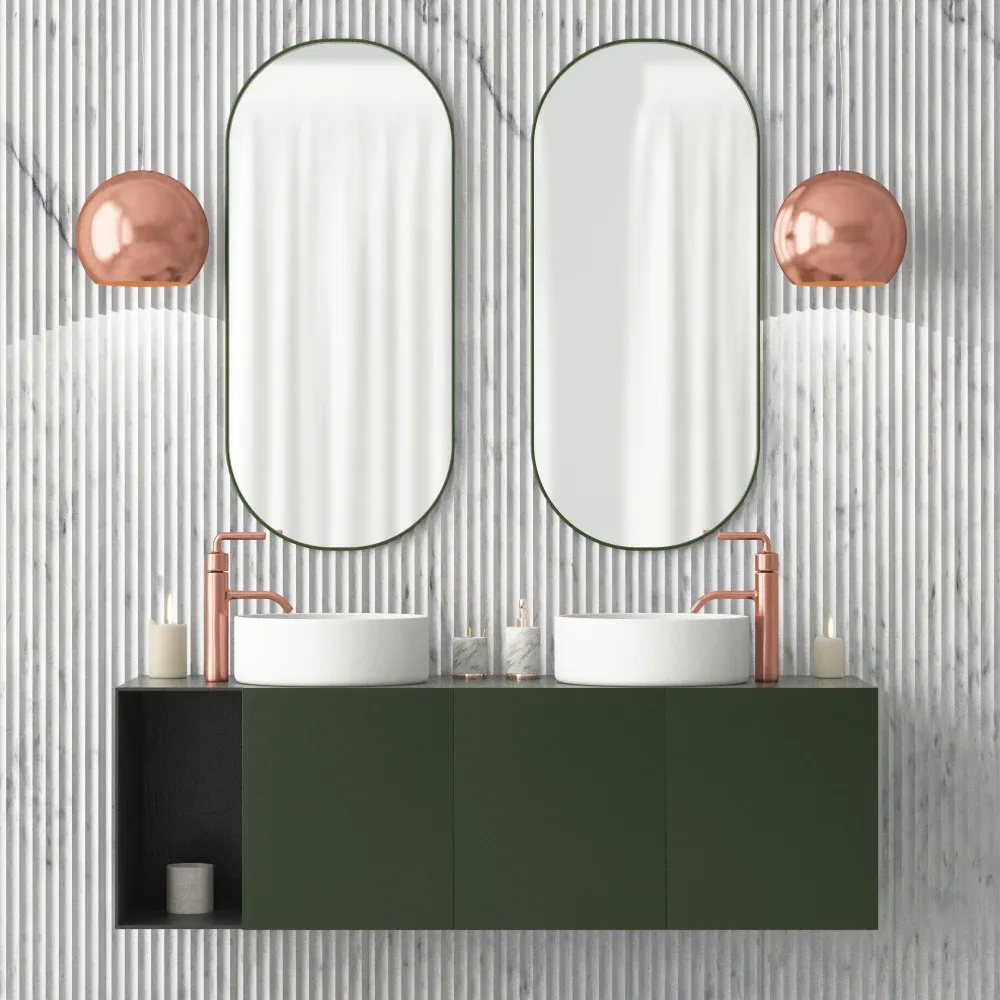
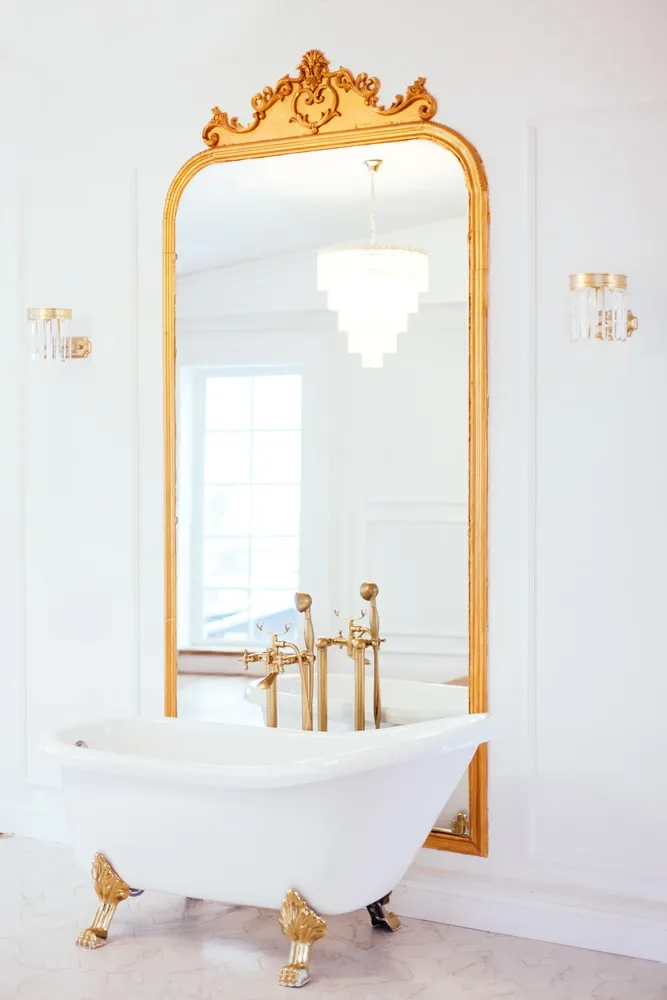
Mirrors add light and make these smaller rooms feel more spacious. Even small changes like new cabinet handles or light fixtures can bring Art Deco style to these practical spaces. The contrast of hard materials makes these rooms feel clean and timeless.
Modern Art Deco for today's homes
You can enjoy Art Deco style without going all-in by mixing Art Deco pieces with modern furniture. Use bold colors as accents rather than covering every surface, and choose one or two fancy materials instead of many. A few geometric patterns go a long way in a modern home.
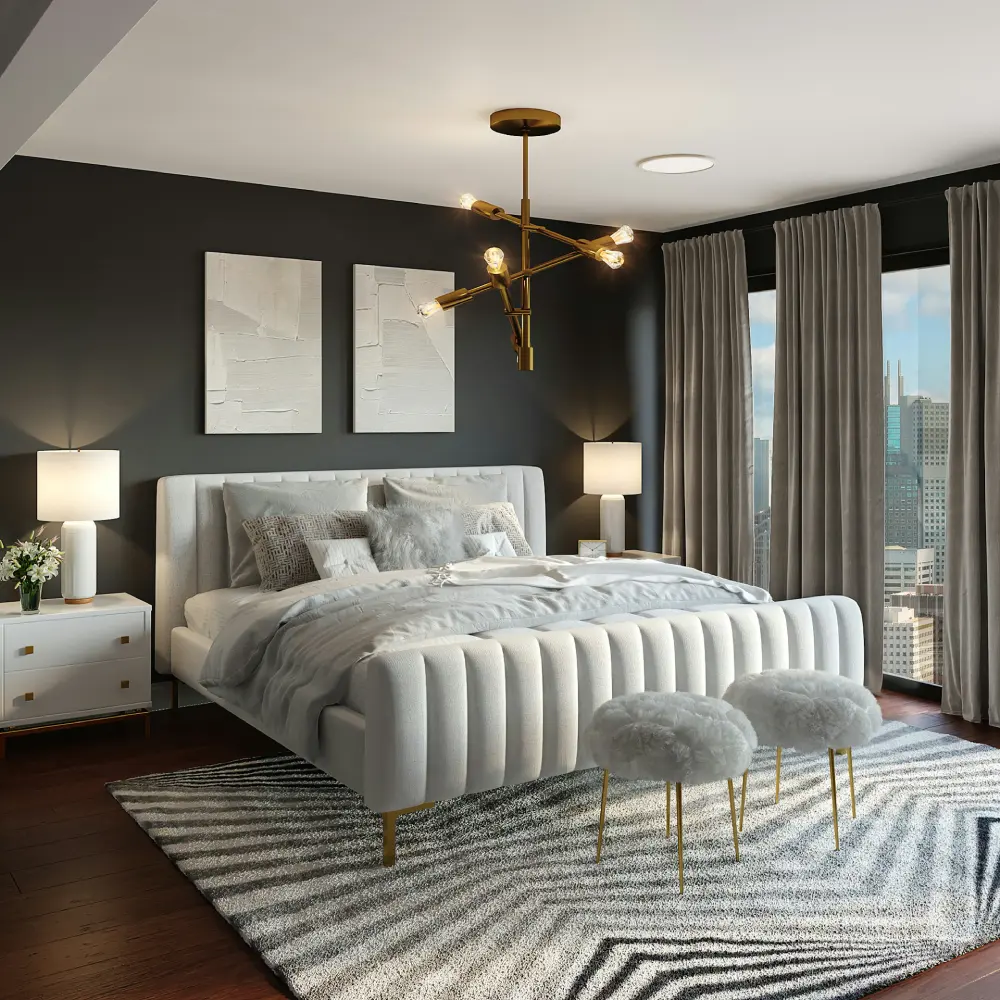
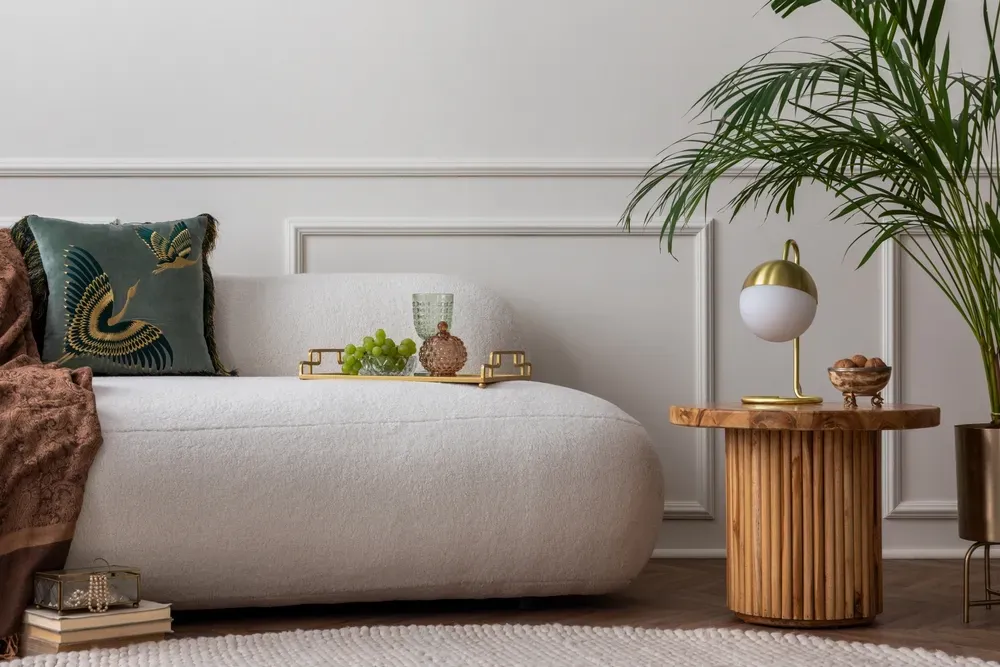
The key is to balance old and new styles in a way that works for your life today. Look for new pieces with Art Deco flair that offer modern comfort and function. Take what you love from Art Deco and adapt it to create a home that feels both special and livable.
Conclusion
Art Deco remains timeless. It's a style that appeals to many homeowners as well as public spaces like hotels and restaurants. Whether you embrace it fully or add small touches, this style brings elegance and sophistication to any home.
Planner 5D: The Future of Interior Design
Experience the power of AI-driven design with Planner 5D. Our innovative tools, including the Design Generator, Smart Wizard, and AI floor plan recognition, make bringing your dream home to life easier than ever. Transform your vision into reality and unlock a world of design possibilities today.
Start designing your dream homeFAQ
What makes Art Deco different from other design styles?
Art Deco has bold geometric shapes, rich colors, and fancy materials. It uses strong patterns and clean lines rather than the curves and nature themes of Art Nouveau. The style feels more bold and dramatic than many other design movements.
Is Art Deco too much for a small space?
Art Deco can work in small spaces if you use it with care. Focus on just a few key pieces and use mirrors to make the space feel larger. Choose one or two bold colors rather than many, and keep some walls and surfaces simple.
How can I add Art Deco style without spending a lot?
Start with small items like lamps, mirrors, or throw pillows with Art Deco patterns. Paint is a cheap way to add bold color blocks to walls or furniture. Look for used pieces at thrift stores and flea markets with the right shapes and lines.
Does Art Deco work with other design styles?
Yes, Art Deco mixes well with many styles, especially mid-century modern and modern looks. The key is to find common elements like clean lines or bold colors that work with your current style. Just add a few Art Deco touches rather than changing everything.
What's the difference between Art Deco and Art Nouveau?
Art Nouveau (1890-1910) came before Art Deco and used flowing curves and nature themes. Art Deco (1920s-1930s) features bold geometric shapes, clean lines, and man-made materials. Art Nouveau feels more organic, while Art Deco feels bolder and modern.
What colors are best for Art Deco style?
Classic Art Deco colors include black and white, gold and silver, and deep jewel tones like emerald green, sapphire blue, and ruby red. These bold colors work best when used with some neutral tones for balance. The key is strong contrast between colors.
